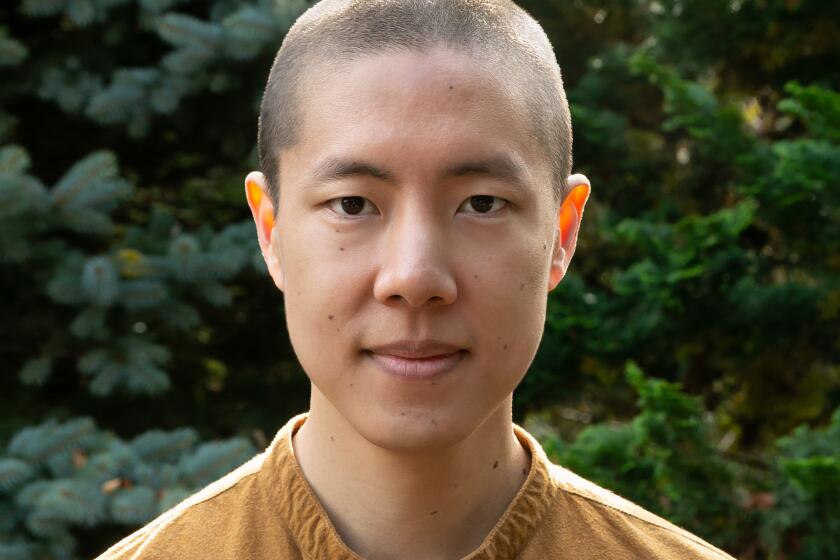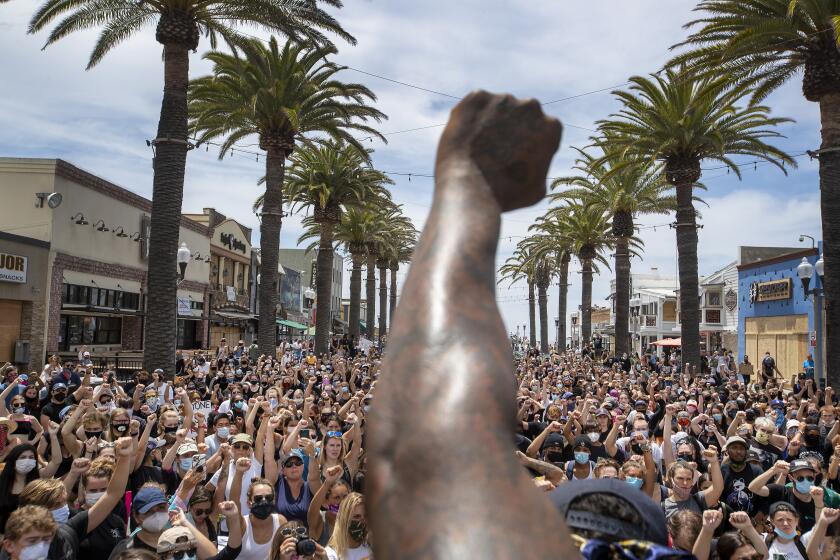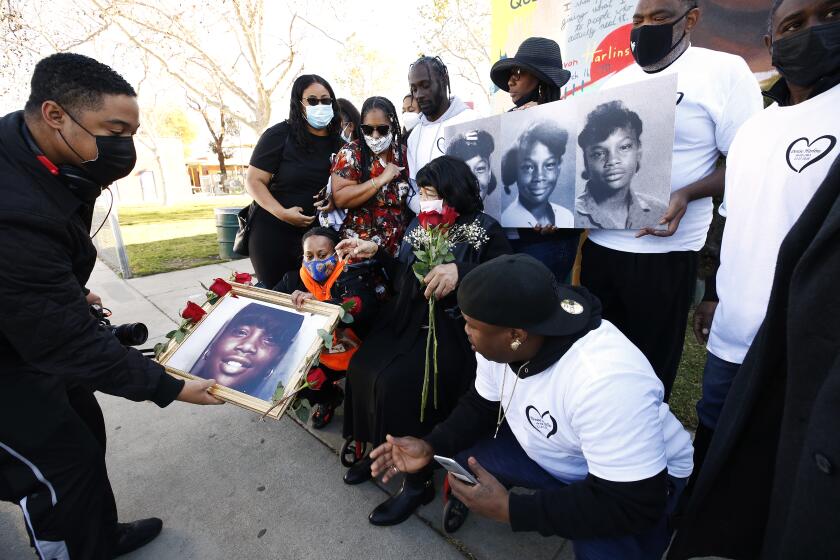A heartbreaking poetry debut weaves webs around Latasha Harlins’ 1991 murder
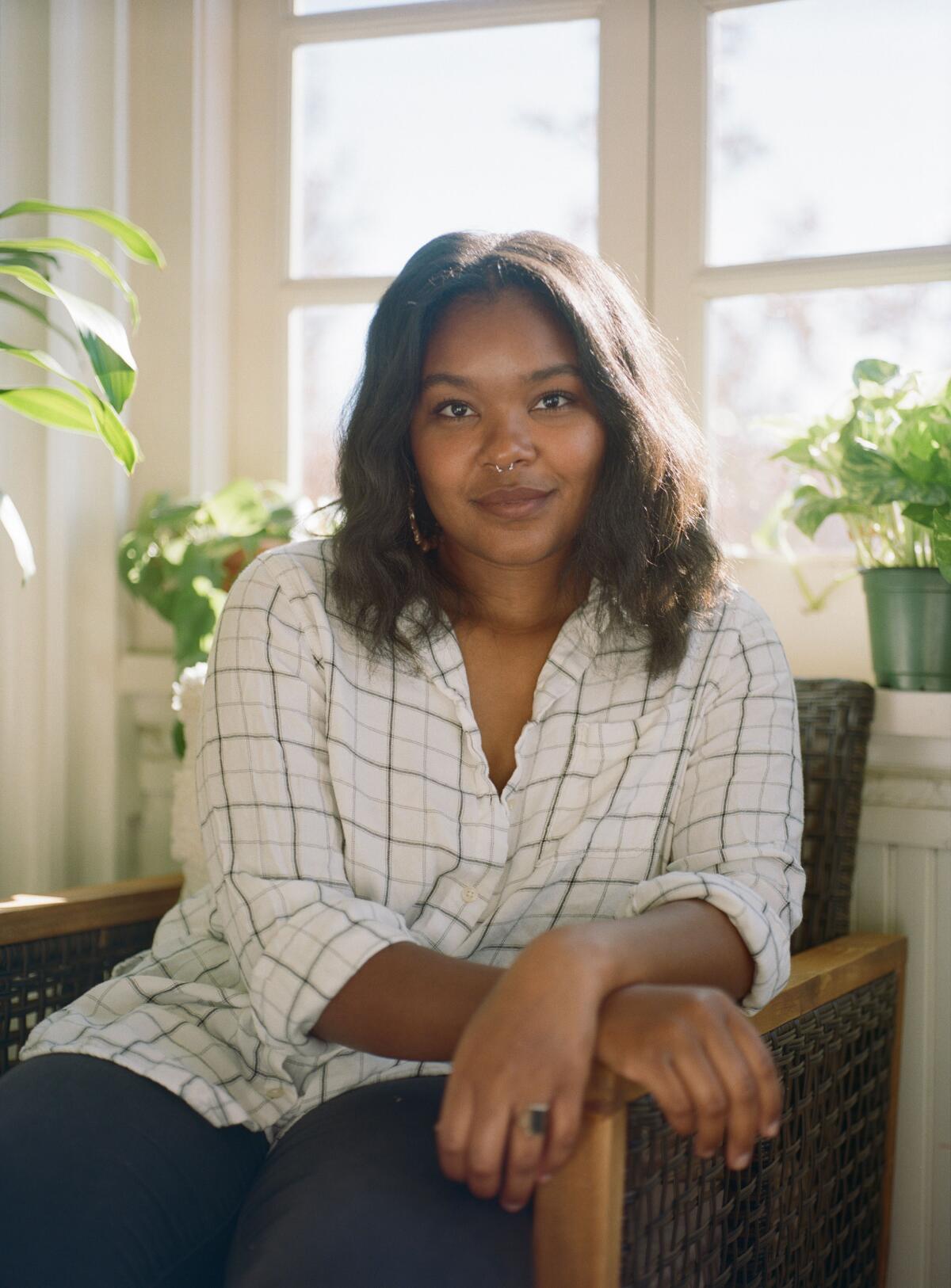
- Share via
On the Shelf
Concentrate: Poems
By Courtney Faye Taylor
Graywolf: 96 pages, $17
If you buy books linked on our site, The Times may earn a commission from Bookshop.org, whose fees support independent bookstores.
The simple version of American racism makes every wrongdoer a white man. The young speaker at the opening of “Concentrate,” Courtney Faye Taylor’s debut collection of poetry, assumes as much when her aunt tells her about a young Black girl killed over a bottle of orange juice. She replies instinctively: “White men live to shoot somebody.” Her aunt says: “the shot came out a woman./ She of a color but not ours.”
The section is titled “Arizona?” because the speaker at first thinks her aunt is talking about Trayvon Martin, who was holding an Arizona iced tea when George Zimmerman shot him dead. Time collapses, and the killing of one child links to another’s. But the aunt also wants to impart, “Boys ain’t the only cause of chalk-/lines. You got that allergy to sixteenth/ birthdays too, understand?”
We are invited to listen in as Aunt Notrie presses her niece’s hair and teaches her about Latasha Harlins. In 1991, Harlins, 15, and Soon Ja Du, 51, got into an altercation over a bottle of orange juice inside Du’s Empire Liquor in South Los Angeles. The two exchanged blows, and when Harlins turned to leave, Du shot Harlins in the back of the head. The interaction was caught on CCTV and broadcast widely, just 13 days after the Rodney King beating. Learning this is both necessary for this young girl and itself a kind of violence, a blow to her psyche; this is underscored when the aunt, frustrated that the niece doesn’t sit still, says, “I oughta/ just slap you.”
We are, collectively, still at a loss to describe, let alone explain, this story. How do we talk about white patriarchal violence when there are no white people or men present? How do we understand the Korean and Asian American histories that brought Du to that moment? How do we recuperate the breathing, human story of Harlins beneath the dense tangle of press, pop culture, lore, scholarship and memorialization that have grown around her?
Ryan Lee Wong’s first novel, “Which Side Are You On,” follows an activist in the Black Lives Matter movement with a lot to learn from his L.A. parents.
The first striking thing about “Concentrate” is its form: Much of it looks like a zine or a researcher’s notebook. Taylor mixes stanzas and prose blocks with photographs and collages and timelines. Second, unusual for a debut, it’s not a collection of the author’s strongest poems to date but a complete conceptual work. Each of the seven sections contributes to and complicates a central theme. In other words, it’s an act of concentration.
This is not the cold archival work of gathering facts from acid-free boxes but archive as grieving, improvisation, autobiography and kinship. In examining Harlins’ life, Taylor also creates a mirror or double of her own. The book maps Los Angeles’ memorialization of Harlins — or lack of it. And throughout, it assembles an index of race and gender, gathering unfiltered moments in Yelp reviews, movies, hip-hop, street writing, scientific studies and politicians’ statements, with a focus on Black-Asian relations and Black girlhood.
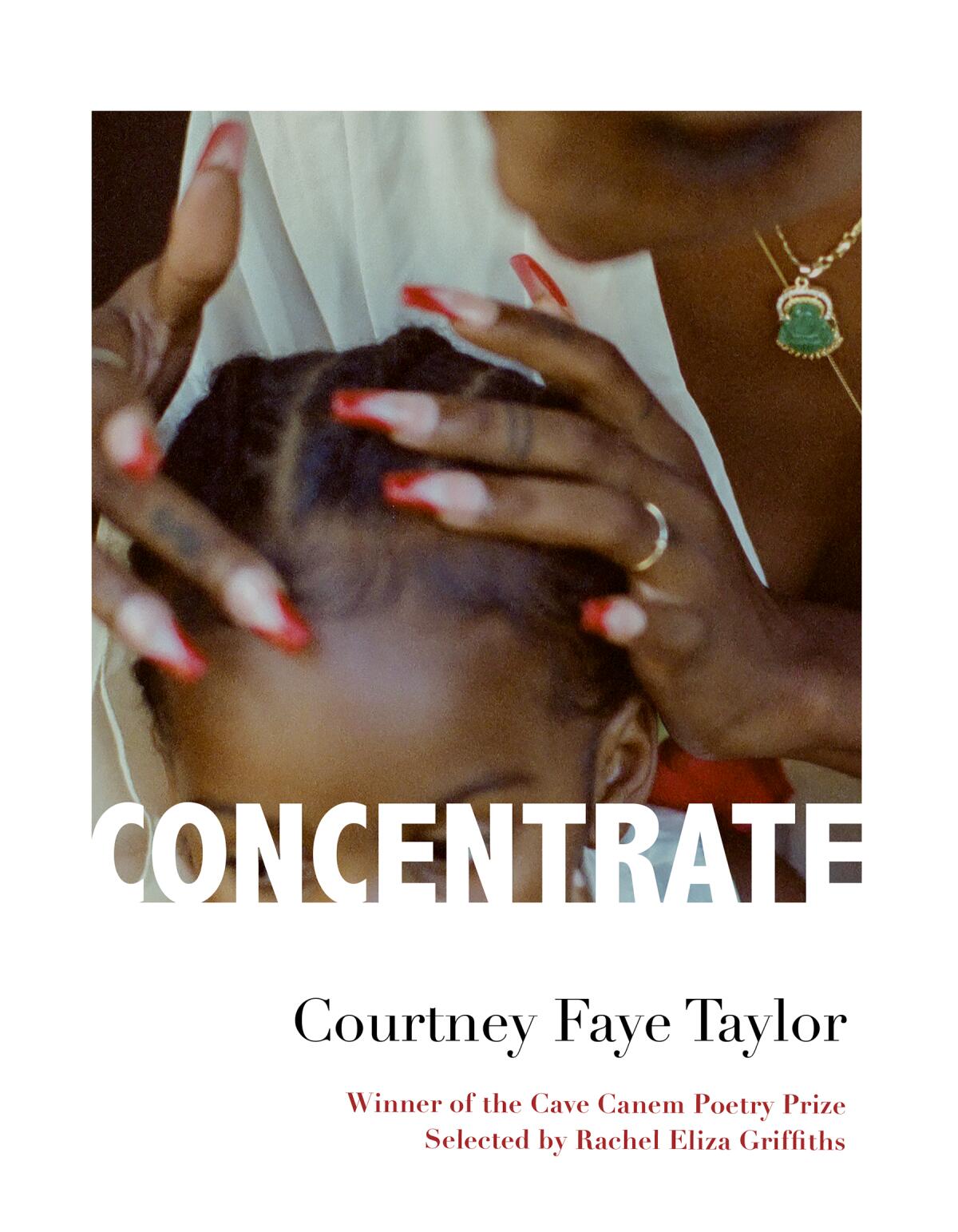
Taylor mostly avoids the pitfall of much writing that attempts to reconcile Black and Asian communities: to draw false equivalents, to show how both have suffered. Some of the diagrams in the book’s fourth section come close to this. Though Taylor is careful to note that they “do not equate experiences but consider them in proximity,” her sweeping timelines, which juxtapose “hampton,” “cotton” and “plaçage myth” on one side with “honolulu,” “cane” and “picture brides” on another, do little to help us illuminate the specific histories she’s examining. Instead, “Concentrate” shines when Taylor focuses on her archive and relates it to her own embodied experiences, nuancing the participants’ identities and humanities.
For instance, the conversation with Aunt Notrie triggers memories of Ice Cube’s infamous “Black Korea,” in which he both names an injury — “Thinkin’ every brother in the world’s out to take so they watch every damn move that I make” — and uses stereotype to injure back — “your little chop suey ass’ll be a target.” These are layered onto Taylor’s photographs of CCTV stills of alleged shoplifters, Black women inside a North Carolina hair store. The images are thus remade, evidence not of shoplifting but of what hasn’t changed in the 30 years since Harlins’ death — and of a mind having to hold two communities’ suspicions of each other.
Walter Mosley, Luis Rodriguez, the coiner of #BlackLivesMatter and others sketch a hopeful future for L.A. and the U.S. after George Floyd protests.
The past enters the present again in the book’s longest and most narratively powerful section, “Four Memorials.” Concerned she was “writing about a city I’d never been to, fumes I hadn’t witnessed,” Taylor travels to Los Angeles to record a travelogue. Works like Wendy Walters’ “Lonely in America” and Saidiya Hartman’s “Lose Your Mother” come to mind — journeys to seek proof of the unimaginable, to converse with people and stories erased.
Taylor visits Empire Liquor and meditates on Harlins’ Aunt Denise, who raised Harlins after her mother was killed in a nightclub, then advocated for justice after Harlins’ killing, and on Du, who we learn had a rageful and abusive husband. The latter expands into a reflection on Taylor’s own experiences of domestic violence, patriarchy and Christianity.
Taylor also visits a mural of Harlins and is moved to discover, through verses reproduced on the wall, that she was also a poet. The author then offers a reproduction of her own childhood poem, for which she won recognition. This layering and doubling — the connections between Harlins’ and Taylor’s aunts, the abusive homes shared by Taylor and Du, the dreamy poetics of Harlins and Taylor as children — bring us closer to all the women involved and highlight not just their suffering but their imagination.
The mural of Harlins looks over a recreation center that was “both Latasha’s adolescent sanctuary and her inauguration into abuse, the place where she was pursued by a counselor twice her age.” Though Aunt Denise tried to intervene, the staff and management of the rec center did nothing stop it. This revelation leads into a section on the speaker’s survival; her poetics both name a pattern of neglect for Black women — from Aaliyah to Oluwatoyin Salau — and mark the specificity of her own abuse.
In one victory, L.A. has renamed a playground for the Black teenager who was shot at a South Central liquor store in 1991
Taylor holds these painful memories in her attention, working against the “accidental wound” of forgetting — as when she goes to Harlins’ former middle school and asks someone about her, only to receive a blank look and a “Who?” It requires immense concentration to animate what has been ignored or repressed, and as Taylor writes, “The absent can only live in memory. As the saying goes, if you disremember us, you kill us, and I’m here to resist a second dying.”
Wong is the author of the novel “Which Side Are You On.”
More to Read
Sign up for our Book Club newsletter
Get the latest news, events and more from the Los Angeles Times Book Club, and help us get L.A. reading and talking.
You may occasionally receive promotional content from the Los Angeles Times.
